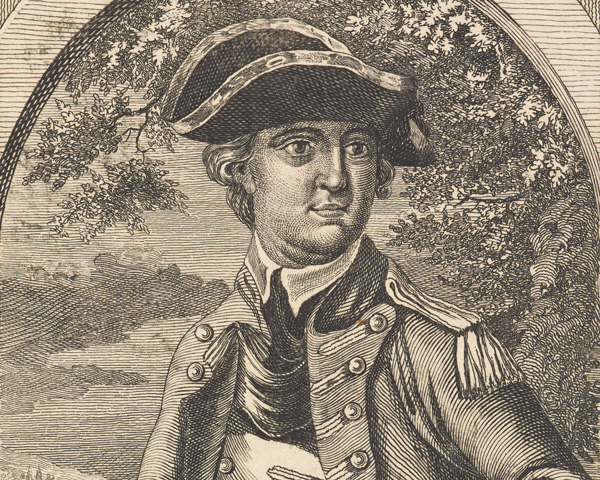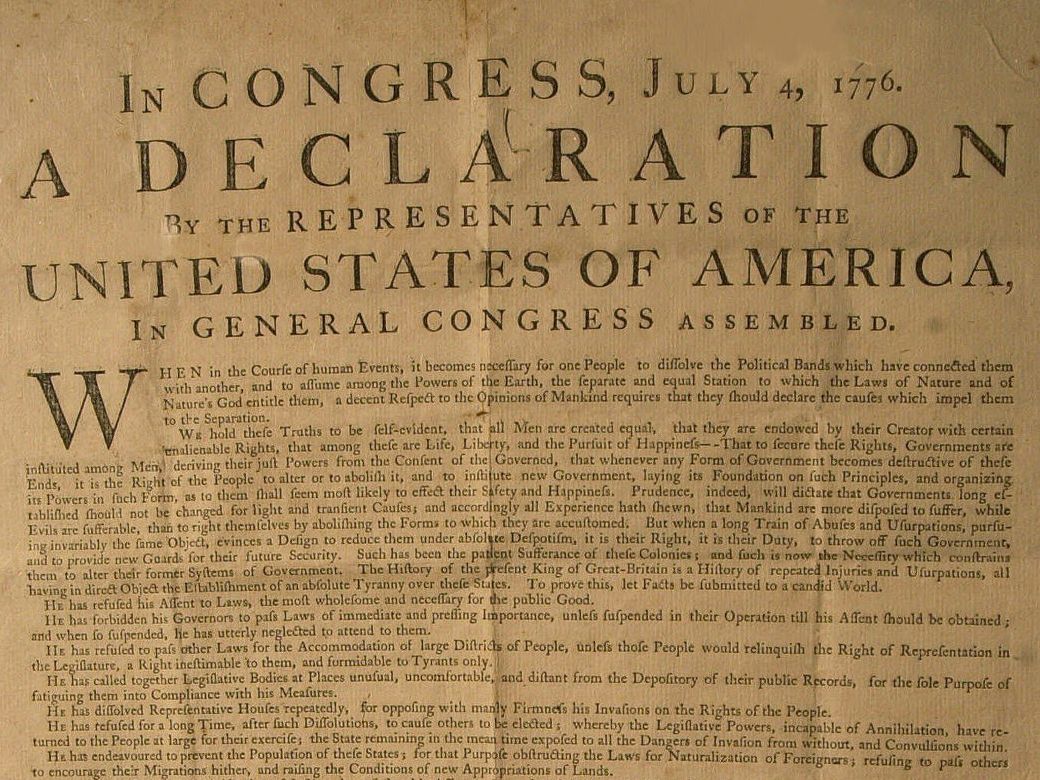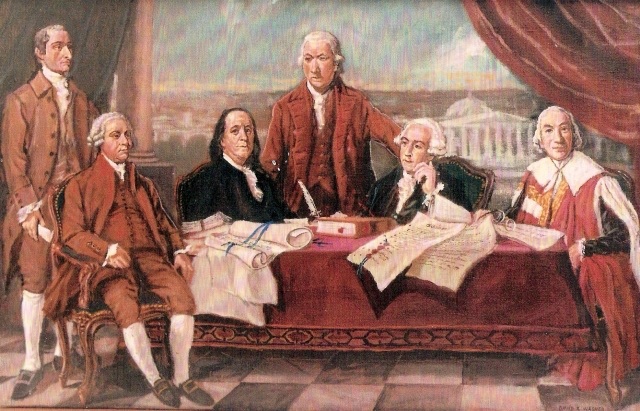Independence Day, also known as the Fourth of July, is one of the most significant holidays in the United States.
It is a day filled with patriotic fervor, fireworks, parades, and barbecues, as Americans come together to commemorate the nation's independence. But what is the history behind this iconic celebration? I believe it is more. Much more than that.
The story of Independence Day begins on July 4, 1776, when the Second Continental Congress, comprised of delegates from the thirteen American colonies, adopted the Declaration of Independence.
This historic document, drafted primarily by Thomas Jefferson, proclaimed the colonies' separation from British rule and established the United States of America as a sovereign nation.
When the first settlers arrived on the Mayflower in 1620 at Plymouth, they had hopes and dreams to found a Nation free of Religious persecution and constraints of the then King of England, King James.
Over the course of the next 100 years, the settlers grew in numbers as ships brought more and more settlers to the New World and offered the poor and disenfranchised of the British Isles and Europe a hope that they could achieve something impossible in their countries of origin: a future created from hard work and determination to succeed.
By 1765, the colonists had become American and were no longer refugees from their former lives. But trouble was brewing: the British Crown, still overlord to the American Colony, saw their hard work and diligence as an object of plunder. Taxes were levied without consultation with the new Americans. The Crown saw the Americans as easy prey and would not involve them in the governance of their new home whereby they could contribute opinion and insight. All that the British Crown wanted was the contribution of their money.
In 1773, the group known as the Sons of Liberty, sworn to silence in terms of their membership, staged the first real open protest to the taxation without representation. They destroyed a shipment of tea in Boston Harbour.
Tensions had been escalating between the colonies and Britain for years. Grievances over taxation, lack of representation, and other oppressive measures led to acts of resistance, including the Boston Tea Party and the First Continental Congress.
The British were quick to respond, shutting down Boston Harbour and in 1774, passed the Intolerable Acts so as to punish the Government of Massachusetts. On September 7th, 1774 the Massachusetts colonists responded with the Suffolk Resolves whereby they declared that they would form a shadow Government and boycott imported goods from Britain unless the British repealed the Intolerable Acts. The Americans formed the Continental Congress, formed by the States with the objective being to control resistance and seize power.
By April 1775, tensions between the American colonists and British authorities had escalated. The British government sought to disarm the colonial militias and seize a cache of weapons rumored to be stored in Concord, a town approximately 20 miles northwest of Boston.
On the night of April 18, 1775, American patriot Paul Revere, along with William Dawes and Samuel Prescott, rode through the countryside to warn the local militias of the impending British movement.

In the early morning of April 19, British troops arrived in Lexington, where they encountered a small group of militiamen assembled on the town green. Shots were fired, and the skirmish that followed became known as the Battle of Lexington. The British quickly overwhelmed the colonial resistance, leaving several colonists dead and wounded.
The Battle of Concord marked a turning point in the American Revolutionary War. It demonstrated the determination and effectiveness of the colonial militias against the British army and further galvanised the American cause for independence. The events of April 19, 1775, including the Battles of Lexington and Concord, are often considered the start of the Revolutionary War.
Following the outbreak of hostilities between the American colonists and the British forces, the British army found themselves besieged by the colonial militias in Boston. The American forces aimed to control the city and limit British movements. Recognising the strategic importance of the high ground around Boston, American Colonel William Prescott led about 1,200 colonial troops to fortify Breed's Hill and Bunker Hill on the night of June 16, 1775. The decision to occupy these hills was an attempt to deter British attacks and maintain a strong defensive position.
Despite the American loss, the Battle of Bunker Hill played a crucial role in boosting American morale. It demonstrated that colonial forces were capable of standing up against the well-trained British army and encouraged further resistance. The battle also highlighted the significance of fortifications and the need for disciplined troops in the war.
The Battle of Bunker Hill marked a significant early engagement in the American Revolutionary War. While the British secured the immediate objective, the battle served as a catalyst for the colonists, strengthening their resolve and inspiring them to continue their fight for independence.
As the siege of Boston dragged on, the Americans decided to widen the war and invade Canada. Their goal was to encourage its inhabitants to join the revolution. On 16 September 1775, Brigadier-General Richard Montgomery marched north with about 1,700 militiamen, capturing Montreal on 13 November.
Moving on to Quebec City, he was joined by Colonel Benedict Arnold, who had led another force north. On 31 December 1775, they were defeated by General Guy Carleton. Montgomery was killed and Arnold wounded.

Benedict Arnold is considered a traitor in American history due to his actions during the American Revolutionary War. Arnold initially fought for the American cause and played a significant role in several important battles. However, he later switched sides and joined the British forces, betraying the Continental Army.
The remaining American soldiers held on outside Quebec City until the spring of 1776. They then withdrew towards Montreal.
Counter-attack
On 8 June, having received reinforcements, the British struck back at Trois-Rivieres against an American army weakened by disease. Carleton then launched his own offensive, forcing the Americans to abandon Montreal on 15 June. They were soon pushed back to Ticonderoga, from where they had started out more than a year earlier. source
In March 1776, the Congress had appointed Mr George Washington to command the Continental Army, and, on July 4th, 1776 at Independence Hall in Pennsylvania, the Congress declared Independence from Britain.

"When in the Course of human events, it becomes necessary for one people to dissolve the political bands which have connected them with another, and to assume among the powers of the earth, the separate and equal station to which the Laws of Nature and of Nature's God entitle them, a decent respect to the opinions of mankind requires that they should declare the causes which impel them to the separation."
After a series of defeats and setbacks, including the loss of Philadelphia to British forces in September 1777, the Continental Army, led by General George Washington, retreated to Valley Forge in December of that year. The purpose of the encampment was to establish a winter headquarters and regroup for the upcoming campaign season.
By the time the army left Valley Forge in June 1778, the soldiers had undergone significant hardships but emerged as a more disciplined and unified force. They were better prepared for the challenges ahead, having received training, reorganization, and improved supply systems. The experiences at Valley Forge helped pave the way for future successes on the battlefield.
The Battle of Yorktown, also known as the Siege of Yorktown, took place from September 28 to October 19, 1781. It was a decisive engagement in the American Revolutionary War and marked the culmination of the war in favor of the American colonists.
By 1781, the war had been raging for several years, and the British forces, under the command of General Charles Cornwallis, occupied the city of Yorktown, Virginia. Yorktown was strategically significant because it was located on a peninsula bordered by the York River and Chesapeake Bay, making it an ideal position for a naval blockade. In an effort to trap and defeat the British army, General George Washington, commander-in-chief of the Continental Army, coordinated with the French commander, General Jean-Baptiste de Rochambeau. They devised a plan to launch a joint American-French assault on Yorktown.
The Battle of Yorktown was a turning point in the American Revolutionary War. It marked a significant victory for the American colonists and their French allies, severely diminishing British military capabilities and eventually leading to the end of the war. The battle's outcome solidified the path towards American independence and the establishment of the United States as a sovereign nation.
Yorktown was not the end of the war. The British still had 30,000 troops in North America and still occupied New York, Charleston and Savannah. Fighting continued on land and at sea. But the defeat finally convinced the British that, faced with their world-wide commitments, the war in America was unwinnable.
Peace negotiations opened in April 1782. They concluded with the Treaty of Paris in September 1783, when Britain recognised the independence of the United States.
The British Army had performed relatively well on the battlefield and had shown an ability to adapt their tactics to suit the North American terrain. But the problems of logistics were insurmountable, and the entry of France and Spain into the war on the side of the colonists negated British naval dominance and proved decisive.
The American Revolutionary War lasted from 1775 to 1783. source
The signing of the Treaty of Paris in 1783 marked the eventual victory for the American colonies.
Paris, the capital of France, was chosen as the location for the peace negotiations due to the involvement of the French government in supporting the American colonists during the war. France had provided military aid, financial assistance, and diplomatic support to the Americans, and hosting the negotiations in Paris symbolised their role as a key ally. It was also neutral ground for negotiations, allowing both sides to engage in discussions without any overt advantage or bias.
The American delegation, led by John Adams, Benjamin Franklin, and John Jay, was based in Paris throughout the war, engaging in diplomatic efforts and seeking foreign support. The presence of the American representatives in Paris made it logistically convenient to conduct negotiations there. Overall, the choice to sign the Treaty of Paris in the capital city of France was driven by a combination of diplomatic considerations, the involvement of various European nations in the conflict, the existing American representation in Paris, and the desire to acknowledge France's support and involvement in securing American independence.
The first celebrations of Independence Day took place shortly after the Declaration was signed. On July 8, 1776, Philadelphia, the nation's capital at the time, held a public reading of the Declaration, accompanied by bonfires and ringing of bells. The following year, on July 4, 1777, the anniversary was marked with more elaborate festivities, including parades, fireworks, and concerts. The tradition of celebrating Independence Day had begun.
As the United States expanded westward, so did the celebration of Independence Day. It became an occasion for communities to come together, reinforcing a sense of national unity and pride. In the 19th century, the holiday's observance gained momentum, and various customs emerged, such as picnics, speeches, and displays of patriotism. Fireworks, a symbol of the rockets and cannons that secured independence, became a staple of the festivities.
In 1870, almost a century after the Declaration of Independence, Congress declared July 4th a federal holiday, granting it official recognition across the nation. The day became a time to honour the sacrifices of the founding generation, pay tribute to American ideals, and appreciate the hard-won freedoms enjoyed by its citizens.
Wars have been fought and lives lost to defend those unalienable to Rights to Life, Liberty and the pursuit of happiness. Yet, here we are today, in 2023, ruled by Governments divided and media divided. We are ruled by opinions from tweets, facebook posts and lobby groups that seek to further drive wedges between people, groups of people, communities and families.
As the United Nations, the World Economic Forum, and other unelected groups receive power given to them by our governments, I must wonder what there is to celebrate these days.
When you have fought and fought so hard, surely it is wrong to surrender that for which you have sacrificed so much?
BLOG COMMENTS POWERED BY DISQUS




















































